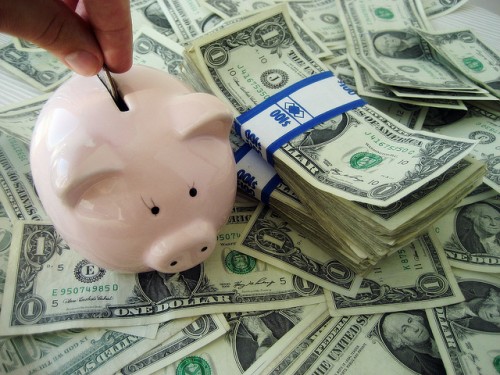Saving 101: What Is a High Yield Savings Account?
Posted by : Premraj | Posted on : Friday, November 29, 2019

About 21% of American adults don’t have any amount of savings. Of those that do save, 58% aren’t saving enough.
In other words, most Americans wouldn’t be able to hand an emergency or even settle down for retirement. If you arent saving your money, you need to start now.
The best way to do that is to get a high yield savings account.
But what is a high yield savings account?
Keep reading to learn more!
What Is a High Yield Savings Account?
A high yield savings account is the same as any other traditional savings account, but there’s one major difference.
It has a much higher interest rate.
In fact, high yield savings accounts often have interest rates that are 25 times higher than the national average. That means you can get a lot more return on your money.
For example, let’s say you put $10,000 in a high yield savings account and the interest rate is 1.35%. If you leave that money alone for a year, you’ll earn over $135 extra.
And some interest rates are even higher than 1.35%.
Can You Withdraw Money?
Remember, except for the interest rate, high yield savings accounts work more or less the same as a traditional savings account. That means you can withdraw money any time you want.
However, just like any savings account, you’ll be limited to six withdrawals per monthly cycle.
So what happens if you need money but you’ve already reached your withdrawal limit? If you need money desperately, it might be a good idea to take out a loan. You can learn more about that when you visit this website.
How Much Should You Save?
The amount of money you should start saving depends on your personal financial situation.
It’s a good idea to have at least 3 to 6 months of living expenses in a savings account. This way you’ll still be able to support yourself if you lose your job or a medical emergency.
But if you can’t afford to put that much money in a savings account right now, start with what you have. If you keep working on your savings habits, the amount you have in savings will grow faster than you might think.
What to Look for in a High Yield Savings Account
You probably won’t find a high yield savings account in your normal bank. Most banks that offer high yield savings accounts don’t provide many (if any) other services.
This means you’ll have to have your savings account in one bank and your checking account in a separate bank.
But don’t let this discourage you from investing your money in a high yield savings account. Using more than one bank isn’t just common, it can also be a good idea.
But there are a few things you need to look for when choosing a high yield savings account.
What’s the Interest Rate?
How high is the interest rate?
Remember, the whole reason you’re choosing a high yield savings account is the interest rate. So don’t settle for something low. Spend some time shopping around.
Different banks will offer different rates.
You may also want to find a bank that has a promotional rate. This can give you an even better deal.
Check the Initial Deposit
You’ll probably have to deposit a certain amount to open your high yield savings account. The initial deposit could be several hundred dollars.
Are you comfortable depositing that much right away?
If you don’t have enough money, spend some time saving up enough to get started. Don’t settle for a standard savings account if that’s not what you want, just take the time to get to where to need to be.
What’s the Minimum Balance?
You’ll probably have to keep a certain amount of money in your high yield account at all times. What is this minimum balance? Is this amount manageable for you and your financial situation?
Are There Any Fees?
Many high yield savings accounts will charge fees for certain things.
For example, if you go under the minimum balance, you might be charged a fee. You may also be charged if you withdraw money more then 6 times per monthly cycle.
Ask about any other fees you may be charged. You should also ask if there are ways to avoid these fees. For example, if you have the minimum balance required in your account at all times, you shouldn’t be hit with an extra charge.
It’s not worth investing in a high yield bank account if you’ll have to pay fees every month.
And don’t overlook the fees just because they’re small. This account is supposed to help you save money, not spend it. Even small fees can add up fast.
Understand How to Make Withdrawals and Deposits
You’ll have to make deposits and withdrawals to and from your high yield savings account at some point. This process might seem obvious or simple, so it’s easy to overlook.
But don’t make this mistake!
Can you use an ATM to take money out of your account? Are you able to take any money out at all? (Some high yield accounts may have different terms than normal savings accounts.)
Make sure you know the best way to access your money and add money to your account. Otherwise, you may find yourself in a bit of a pinch.
High Yield Savings Accounts 101
So what is a high yield savings account?
It’s almost exactly the same as a traditional savings account. But they have much higher interest rates than normal, meaning you earn more money.
If your goal is to save as much money as possible, you should consider getting one of these accounts.
Want to learn more helpful financial tips?
Make sure you take a look at the rest of our blog!
 SU
SU REDDIT
REDDIT







